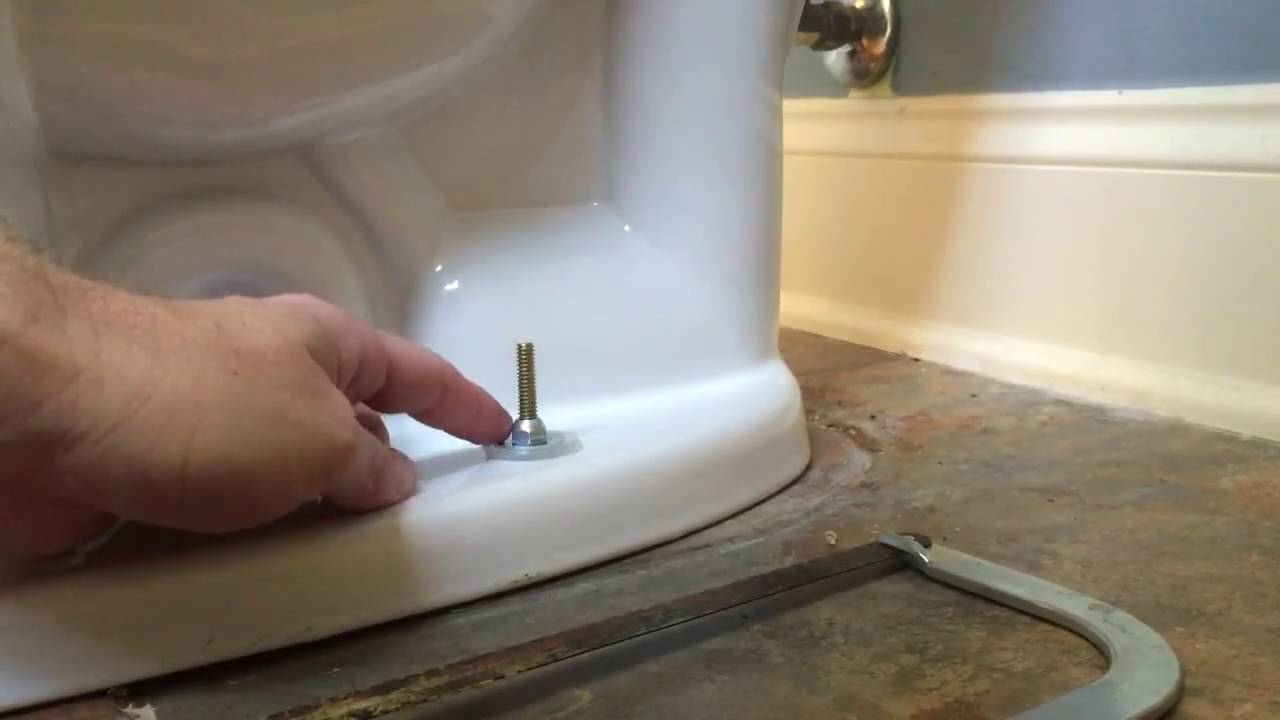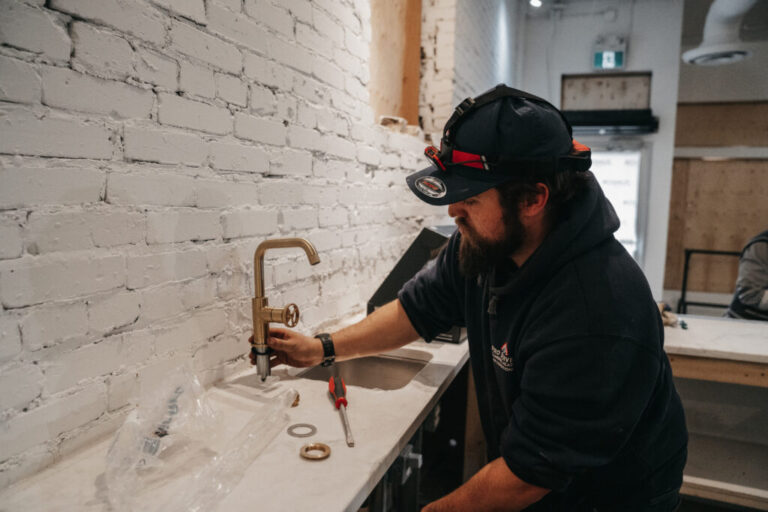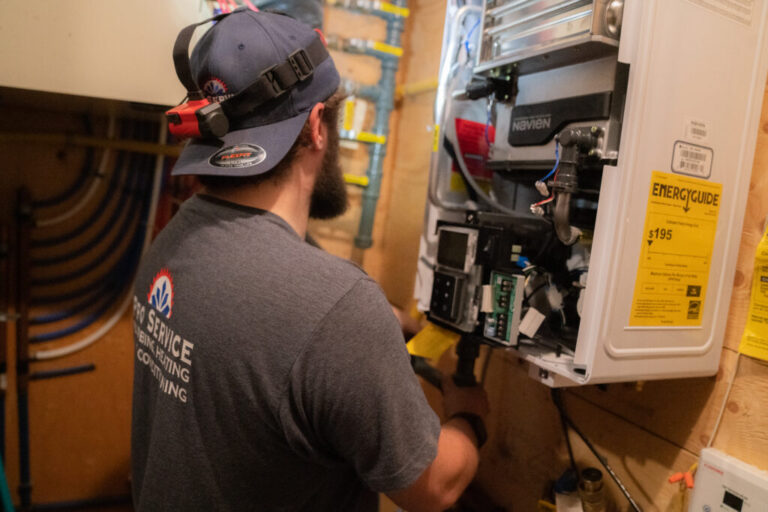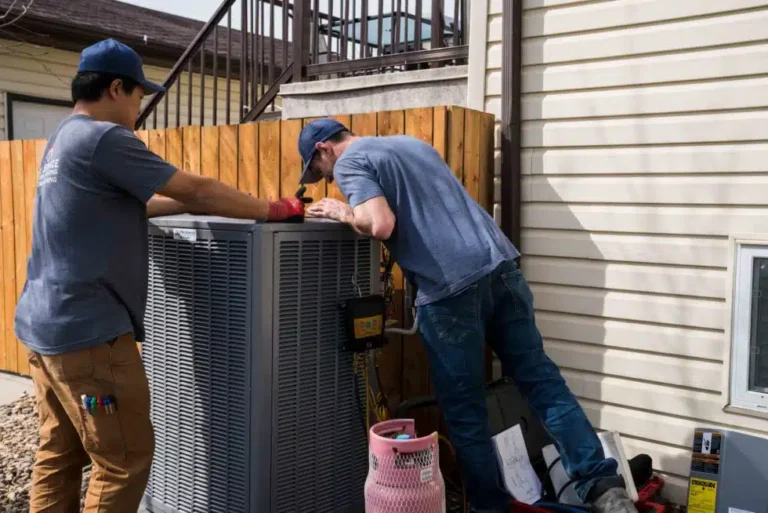
Toilet Repair Saskatoon – Every DIY Toilet Repair You Need to Know
By Ben Wanner of Pro Service Mechanical
Nothing is worse than toilet problems, especially if you only have one or two in your home. Here is a very comprehensive list of toilet fixes that may help you out in a bad situation. Remember if you are not sure or do not feel comfortable performing these DIY tips then call Pro Service at 306-230-2442.
Let us start by reviewing this diagram of all the toilet parts and familiarize ourselves with them.

OK now that we know the major working parts of our toilet we can look at some solutions to issues we may be having.
Clogged Toilet
- (Step 1) Use the Correct Plunger – Not all plungers are made for plunging toilets. For toilets we are looking for a plunger with a protruding flange. Flat bottom plungers are for sinks. Before you start you may want to put on gloves and protect the area around the toilet as some water may splash when you are plunging. If there is very little water in the toilet bowl i would suggest reaching into the tank and lifting the flapper to release some water. This will help create suction. Then push down and repeat until the clog is removed.

Proper Toilet Plunger
- (Step 2) Plumbing Snake – If plunging didn’t work it may be time to try a plumbing snake.. This involves turning and pushing the snake until you can retrieve the clog. For toilet clogs or plugs we suggest using a closet auger. These are made to fix toilet clogs.

Closet Auger
- (Step 3) Home Made Drain Cleaner – If you still can’t get the clog out you may want to make a drain cleaner. Mix together half baking soda and half white vinegar. Avoid using harsh chemicals as they can splash on someone when plunging or when they pull off the toilet.
- (Last Resort) Take Toilet Off – Taking off the toilet will require shutting off the water supply and removing the bolts at the bottom. The we can see if the obstruction can be removed from the bottom of the toilet or at the flange or drain piping. Reinstalling the toilet will require a new wax seal and may require replacing t bolts and resealing it to the floor. This type of job is best left to an experienced plumber. Inexperience and overtightening of the bolts could cause damage to the toilet and an improperly installed wax seal will leak.
Running Toilet
See our article on how to repair a running toilet here. Testing for a leaking flush valve on your toilet is a simple as adding a little food colouring to the tank and seeing if it ends up in the toilet bowl.
Toilet Not Flushing Properly
- Check the Fill Level – Assuming the toilet is clear of obstructions the first and easiest thing to do when your toilet is not flushing properly is to check the fill level. If the fill valve and float are set properly inside the tank the water should fill to an indicator line on the inside of the tank. Without the proper amount of water in the toilet it will not achieve proper siphonic action. We also do not want the water level in the tank to be to high. See the this video on adjusting different types of fill valves.
- Check the Vent – If you can see the plumbing vent stack from the ground or with binoculars then have a look. On newer homes sometimes caps for pressure testing get left on the vent. This will often be an plastic cap and will be very obvious. We also know that in some cases in the winter time these vents can freeze or become covered with snow. Removing these obstructions may require working on the roof which would require fall protection. This may not be a DIY job depending on your situation. I would generally recommended a plumber for this job or even a roofer. Some signs of a plugged vent may include noisy drains, sewer gas smell and/or poor flushing toilets.

plumbing vent with test cap not removed
- Clean Well Under The Rim of the Bowl – The holes under the rim that let the water out from the tank can become plugged with dirt or minerals. Cleaning well under the rim of the toilet can often fix the problem. You may need to clear the holes with the end of a stiff wire.
Other Issues
- Flushing Twice or Flushing Too Long – This is usually due to the water level in the tank being too high. Again refer to the video on adjusting your fill valve. This could also be a venting issue as previously discussed.
- Toilet Tank Filling Slowly – If this is the case it is likely time to have a plumber change the shut off valve and water line to the toilet. If you feel comfortable with this job then it is DIY but if you have not done any supply piping connections before then I don’t suggest it. These shut offs can become clogged with minerals and worst of all if they are old enough they can leak or not work at all.
- Noisy During Tank Fill – Some toilets do not have a fill valve. They may have what is known as a ballcock. These tend to be very noisy but can be changed very easily. This image shows a ballcock assembly.

Toilet Ballcock Assembly
- Old Flapper (Short Flush) – Sometimes the flapper in the toilet tank just needs to be changed. As they become old they can become waterlogged and heavy. This will cause them to close too quickly. Changing the flapper is very easy and can be done by most homeowners. You can find them at almost any hardware store and they will likely come with a set of easy to follow instructions.

Toilet Flapper
- Leaking Seals – There are several seals on a toilet which can leak. Sometimes a seal will require something being tightened on the toilet. Again this is not a good DIY project for someone who is not experienced with working on toilets as overtightening can crack the tank or the bowl. This will almost always result in full replacement of the toilet. If the toilet is leaking at the base then you likely have a leaking wax seal. This will require removing the toilet and is best left to an experienced plumber. A leak at the seal on the fill valve is also quite common and is best left to a plumber to fix.
- Leaking Waterline or Shutoff Valve – It is common to see a small pail or pan under the shut off valve of a toilet indicating that there is a slow leak. This should be replaced as soon as possible by your plumber.

Leaking Shut Off Valve
- Sticky Handle – There is a mounting nut behind the handle inside the tank. This can get mineral build up and cause the handle to stick which may leave the flapper up longer than it should be and it can waste water. This is common and is often accompanied by a note left in the bathroom or instructions to “jiggle the handle”. You can easily take off the nut and clean this to fix the problem. Make sure you turn the water off to the tank first and drain it.
- Flushometer Issues – Some toilets have what is called a flushometer. These flushing devices are not common in residential homes as they require more water pressure and a larger supply pipe than we normally would see in a residential home. Problems with a flushometer are inadequate water pressure, long flushing, short flushing, no flush and of course leaks. Flushometers have many internal parts that can wear out. There are also a lot of adjustments on flushometers. Fixing a flushometer is best left to a plumber with experience in commercial plumbing.
 Flushometer
Flushometer
- Toilet Water Lowering – This may be due to a cracked bowl or cracked trap inside the toilet. Checking this may require removing the toilet. If the toilet is cracked then replacing it is often your only option.
- Loose Toilet – A loose toilet is often accompanied by a leak at the base but not always. If you stand over the toilet and put your knees on either side of the bowl, you can try and gently rock the toilet back and forth. The toilet should not really move at all, if it does it is loose. The bolts that are under the plastic covers at the base of the toilet likely need tightening. This should be done before the toilet starts to leak or the toilet becomes insecure. This again requires experience as overtightening could cause the toilet to crack. There could also be other issues at the base. If the subfloor under the toilet is starting to rot then the toilet may move.

Toilet Bolt
If you have any other questions or concerns about Cooling, Heating or Plumbing call the pros from Pro Service at 306-230-2442. We have 24/7 365 emergency service and we are always here to help.







